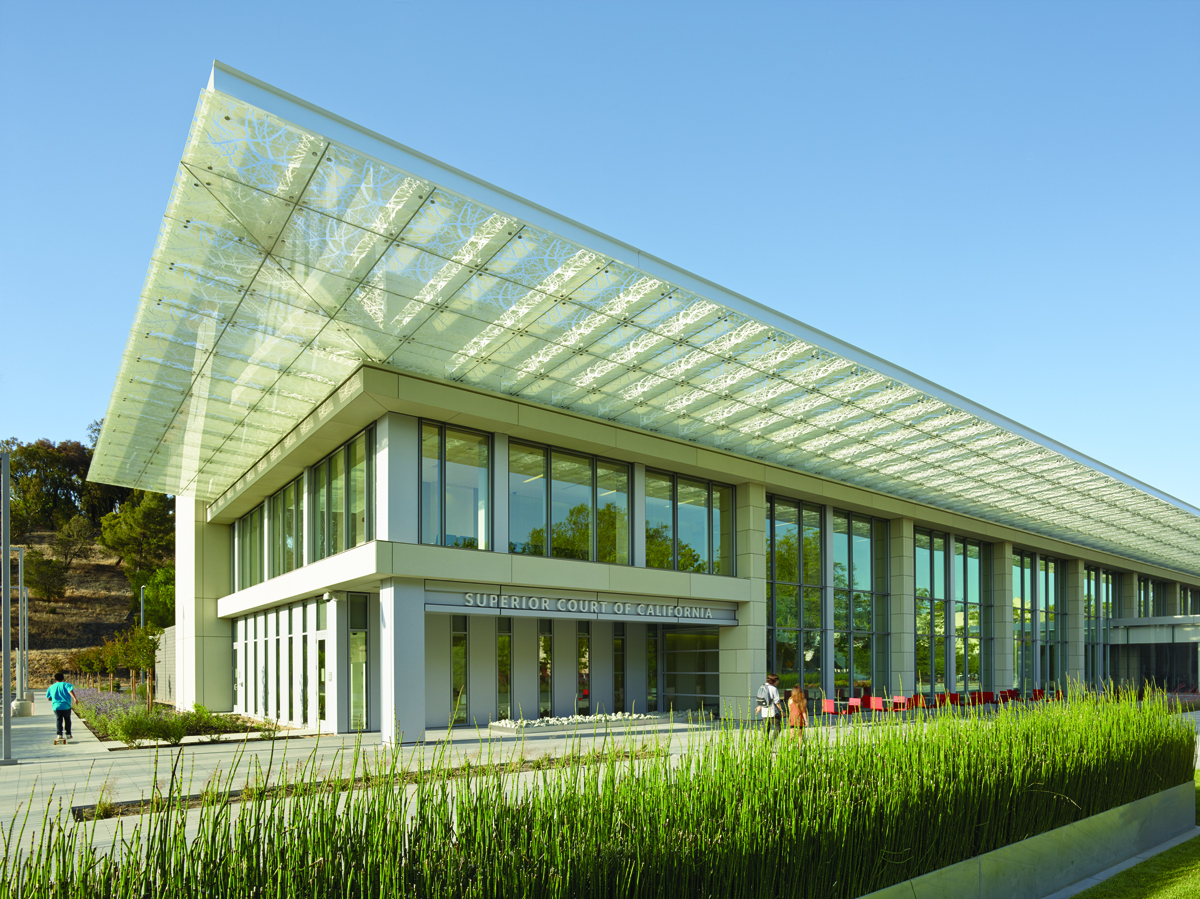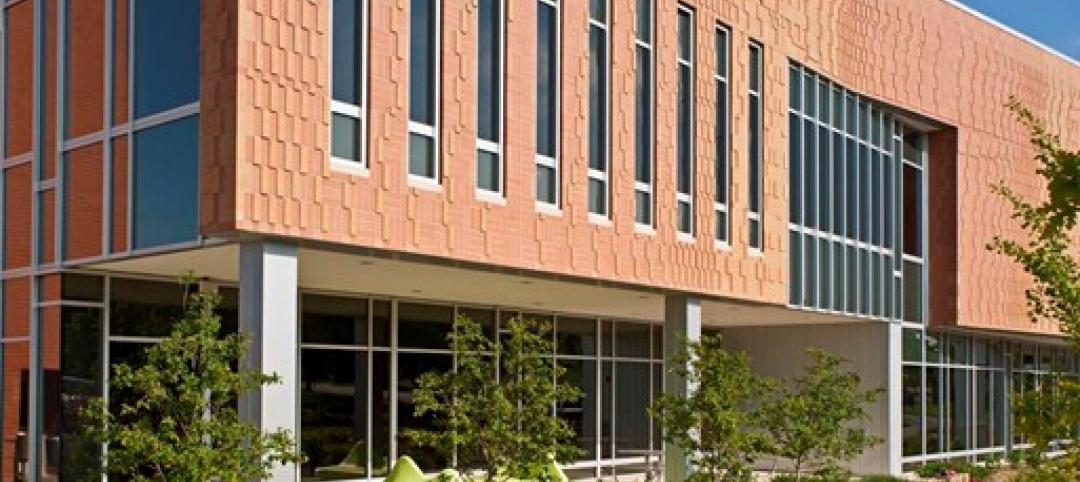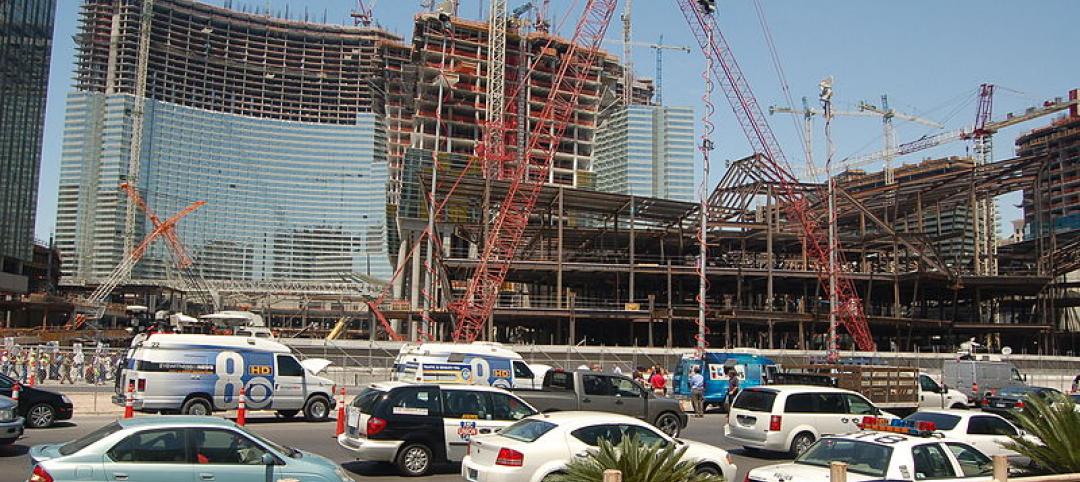It took six years, but in 2013, the Utah State Courts finally got the state legislature to approve a budget for the $34.2 million 2nd District Juvenile Courthouse, in Ogden. When it opens this May, the 85,000-sf, five-story building will include eight courtrooms, offices for judges and their 50-member staff, and space for juvenile probation services and the Weber County Sheriff’s security staff.
Projects like the Utah courthouse are luxuries for many states that, despite improving economies, are struggling to keep their heads above water.
Since the second half of 2013, state tax collections have fluctuated. They were down in the first half of 2014, then rebounded by 4.4% in the third quarter of 2014 over the same period a year earlier, according to the Rockefeller Institute of Government. The institute expects continued revenue growth in the coming quarters, but state tax collections have failed to keep pace with expenditures, especially as more states expand Medicaid coverage under the Affordable Care Act.
At least 16 states are facing serious budget shortfalls, according to the Washington Post. These include Louisiana, which is looking at a $1.6 billion deficit, which ballooned by $400 million as the price of oil—a huge source of state revenue—fell by 50%. Other states with impending deficits include Virginia ($2.4 billion), Pennsylvania ($1.8 billion), Kansas ($1 billion through FY 2016), Alabama ($950 million), and Maryland ($900 million).
The National Association of State Budget Officers (NASBO) notes that all states but Vermont either require their governors to submit or sign a balanced budget, or their legislatures to pass a balance budget. With tax increases mostly off the table, achieving balance means spending cuts. Recent data offer inconclusive clues as to the impact of those cuts on future state-funded construction and renovation work.
One snapshot—NASBO’s “State Expenditure Report 2012-2014”—projected a 5.5% increase, to $17.4 billion, in the states’ capital expenditures in fiscal 2014 for projects in an “all other” category that includes stadiums, public schools, and healthcare.
The Census Bureau’s broader estimates for public state and local construction put in place were less robust. Last year that number stood at $251.5 billion, up 2.2% from 2013, but still the second-lowest spending year since 2006.
Big-ticket categories were Roads and Bridges, Education, Transportation, and Sewage and Waste Disposal. Amusements and Recreation (which include sports stadiums) jumped 7.7% to $8.7 billion. Office construction was up 3.6% to $5.4 billion; Public Safety projects (jails, firehouses, etc.) fell by 7.9%, to $6.1 billion. Healthcare declined by 10.5%, to $6.3 billion.
Jan Frew, Deputy Administrator for Idaho’s Public Works division, reached out to several of her counterparts in the National Association of State Facilities Administrators on behalf of BD+C. Most of those contacted reported slight increases in tax revenues but only modest state-funded construction activities, she says.
Frew says that, since 2011, Idaho’s appropriations for public works have been “fairly steady,” at around $22.5 million per year. But while appropriations have recently spiked to $36 million, lawmakers aren’t confident that tax revenues will keep growing and are being cautious about adding to the state’s project funding base. Frew says the state is also reluctant to use bonds to fund projects.
Other states are looking for new ways to lower their construction costs. Illinois, Indiana, South Carolina, and West Virginia are among the states debating whether to repeal prevailing wage laws that apply to government-funded projects.
Newly elected Hawaii Governor David Ige, a Democrat, proclaimed that his state would actively seek more federal dollars to help fund state projects for housing, water, and transportation.
On the other hand, a can-do spirit is evident in Maine, where Governor Paul LePage, a Republican, recently unveiled a three-year, $2 billion, 1,900-project public works plan that, in 2015 alone, would include safety improvement projects at 76 locations, and $4 million for improvements at Portland’s International Marine Terminal.
In Michigan, the first stages of a new $88 million Welcome Center and park for the State Capitol have been initiated, even though the project’s funding mechanism isn’t in place. John Truscott, a spokesman for the Michigan State Capitol Commission, says the early work is being paid for through a $3 million allocation established last year for Capitol renovation and upkeep. The commission is seeking bond financing for the Welcome Center that would be repaid with tobacco taxes.
Related Stories
| Jul 18, 2014
2014 Giants 300 Report
Building Design+Construction magazine's annual ranking the nation's largest architecture, engineering, and construction firms in the U.S.
| Jul 7, 2014
7 emerging design trends in brick buildings
From wild architectural shapes to unique color blends and pattern arrangements, these projects demonstrate the design possibilities of brick.
| Jul 2, 2014
Emerging trends in commercial flooring
Rectangular tiles, digital graphic applications, the resurgence of terrazzo, and product transparency headline today’s commercial flooring trends.
| Jun 30, 2014
Research finds continued growth of design-build throughout United States
New research findings indicate that for the first time more than half of projects above $10 million are being completed through design-build project delivery.
| Jun 18, 2014
Arup uses 3D printing to fabricate one-of-a-kind structural steel components
The firm's research shows that 3D printing has the potential to reduce costs, cut waste, and slash the carbon footprint of the construction sector.
| Jun 12, 2014
Austrian university develops 'inflatable' concrete dome method
Constructing a concrete dome is a costly process, but this may change soon. A team from the Vienna University of Technology has developed a method that allows concrete domes to form with the use of air and steel cables instead of expensive, timber supporting structures.
| Jun 9, 2014
Green Building Initiative launches Green Globes for Sustainable Interiors program
The new program focuses exclusively on the sustainable design and construction of interior spaces in nonresidential buildings and can be pursued by both building owners and individual lessees of commercial spaces.
Smart Buildings | Jun 8, 2014
Big Data: How one city took control of its facility assets with data
Over the past few years, Buffalo has developed a cutting-edge facility management program to ensure it's utilizing its facilities and operations as efficiently, effectively, and sustainably as possible.
| May 29, 2014
7 cost-effective ways to make U.S. infrastructure more resilient
Moving critical elements to higher ground and designing for longer lifespans are just some of the ways cities and governments can make infrastructure more resilient to natural disasters and climate change, writes Richard Cavallaro, President of Skanska USA Civil.
| May 20, 2014
Kinetic Architecture: New book explores innovations in active façades
The book, co-authored by Arup's Russell Fortmeyer, illustrates the various ways architects, consultants, and engineers approach energy and comfort by manipulating air, water, and light through the layers of passive and active building envelope systems.
















